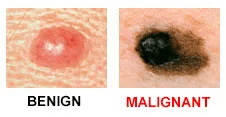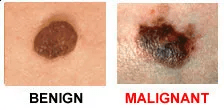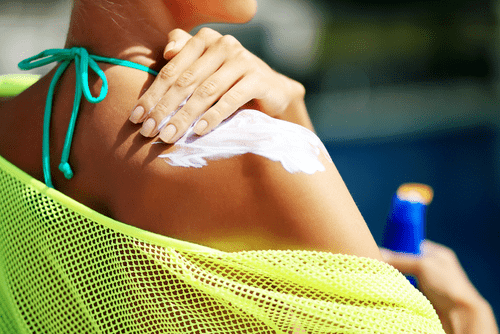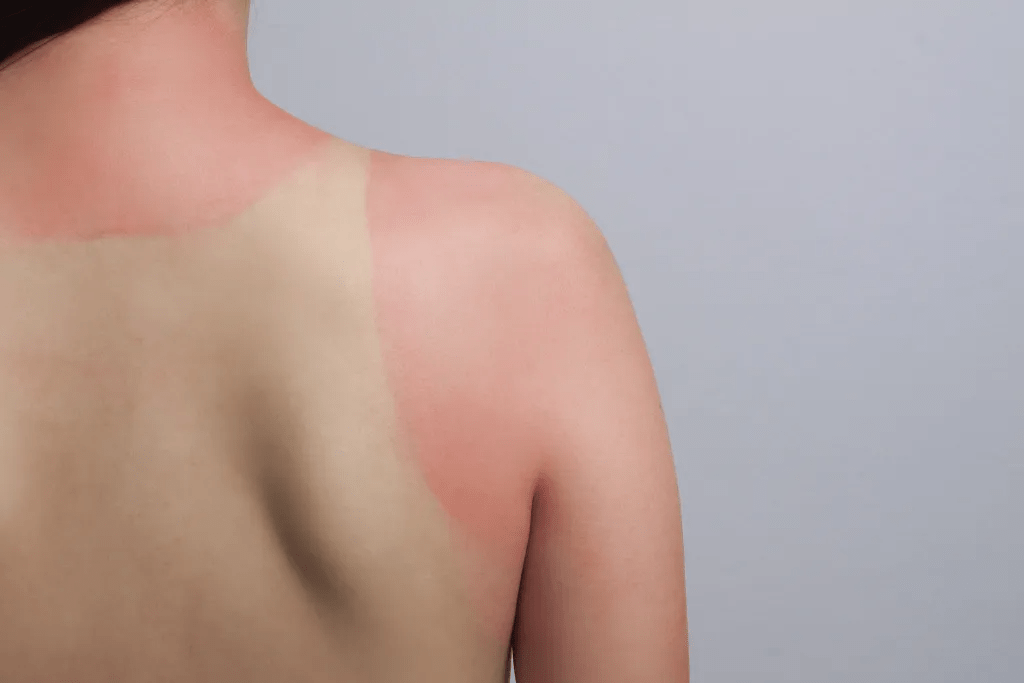- About
- Services
- Patient Information
- Specials
- Shop
- Locations
- Contact Us
Awareness, early detection, and active prevention are the keys to fighting skin cancer and increasing survival rates. Stop wasting time and get educated on skin cancer today! Every time you tan, you damage your skin, as this damage builds you speed up the aging of your skin and increase your risk for all types of skin cancer. As an Arizonian, it’s important to be extra cautious especially near water, snow, and sand because these elements can reflect damaging sun rays, increasing the chance of sunburns.
In fact, studies show that people who have had a history of skin cancer were less likely to die of melanoma than those without because they are aware and catch it early on when it is easy to treat. People with numerous moles, significant sun exposure, or a family history of melanoma are at risk. More than 3.5 million cases of basal and squamous cell skin cancer are diagnosed in this country each year. Be part of the solution.
Skin cancer is the most common type of cancer, and one in five Americans develop skin cancer throughout their lifetime. People living with skin cancer struggle with perceptions that their condition is less serious than other types of cancer despite the significant physical and emotional impact. Nearly 10,000 people die of melanoma each year in the U.S. But the impact of the disease is far wider, as it can devastate family and friends.
When it comes to skin cancer, there is no “at home remedy” or DIY treatment. Your options depend on the type of skin cancer you have, the stage it’s in, the location and size, and your overall health. Warning signs of skin cancer can be spotted early. It’s not just skin cancer when it’s the largest organ in your body and is also the most important organ when it comes to the prevention of infections. When finding them early, and while they are small and have not spread, it makes everything that much easier to treat skin cancer.
Skin cancer is not symptomatic which means spots on the skin won’t necessarily itch or hurt. A new spot on the skin or a spot that’s changing in size, shape, or color is the most important warning sign for skin cancer. The “ABCDE” rule is a useful guide in helping patients and medical providers to identify high-risk lesions or potential malignancies.
A is for Asymmetry. One part of a mole birthmark that doesn’t match the other. Does the spot have an irregular shape with parts that look different from one another?





Annual complete body skin examinations by the providers at Affiliated Dermatology can help in the diagnosis and treatment of skin cancer. We can detect and treat cancerous cells and help prevent them from coming back. We also specialize in the treatment of malignant melanoma by using the specialized technique of slow Mohs surgery and nonmelanoma treatment using Superficial Radiation Therapy.

The answer is yes. A birthmark is made up of an overgrowth of normal skin cells that can go awry over time. This is why it is so important to check your existing birthmarks, moles, and freckles regularly for any changes, and then have any changes screened by your doctor. It is important to know yourself, and know your skin.
Dermatologists suggest you use a full-length mirror to examine your entire body, front, and back. Then, raise your arms and look at your right and left sides. Bend your elbows and carefully check your forearms, underarms, and palms. Look at the backs of your legs and feet, between your toes, and the soles of your feet. With nail polish removed, check your fingernails and toenails as well. Use a hand mirror to check the back of your neck and scalp, and part your hair for a closer look. Finally, check your full back area with a hand mirror.
When performing a self-exam, keep in mind that skin cancer can develop anywhere on the skin, not just in areas that are exposed to the sun. “Melanoma is a type of skin cancer that begins in melanocytes. It is potentially dangerous because it can invade nearby tissues and spread to other parts of the body.
The earlier melanoma is detected and removed, the more likely the treatment will be successful. It can develop from a common mole or a dysplastic nevus and in areas of apparently normal skin. One of the most common myths of melanoma is that it’s always the result of sun exposure. Remember, it only takes a few minutes to check your skin, and it could save your life!
How to stay safe under the sun
While the sun plays a role in many cases, experts say some people inherit genes that make them prone to develop this skin cancer without any exposure to the sun’s rays.

Some other tips to help prevent skin cancer are to:
Be aware that sunscreen does not block all UV rays and needs to be reapplied at least every two hours to maintain protection, especially when sweating or swimming. Sunscreen is just as important on hazy or overcast days. Avoid tanning beds, booths, and sunlamps. There is no safe tanning. Studies have shown that exposure to UV radiation damages your skin, whether the exposure comes from tanning beds or natural sunlight.
Dr. Mullens from Affiliated Dermatology explained his favorite sunscreen:
“I love Neutrogena Sheer Zinc SPF mineral based sunscreen. It contains 21.6% ZINC OXIDE providing effective UVA and UVB protection. The sunscreen dries clear, so it can be used with makeup. It is hypoallergenic, paraben-free, phthalate-free, dye-free, and suitable for sensitive skin.”
After a sunburn, your skin loses a lot of fluid. So it’s important to drink a lot of water. When it comes to bathing and showering, skin that’s overheated after a burn benefits from keeping the water cool.

Hot water can make it worse and even cause painful blisters. Use non-drying and unscented soaps and do not spend too much time in the shower to prevent excessive skin drying. Also, wear loose clothing; a sunburn can cause the skin to become inflamed, so wearing tight clothing will not give it room to heal.
Dr. Andrew Newman who is currently a dermatology resident at Affiliated Dermatology spoke on this question.
If you notice something off, feel free to call us at (602) AFF-DERM to get your skin screening. Even if you don’t notice anything irregular or out of the ordinary, the dermatologists at Affiliated Dermatology in Phoenix, Arizona can help you look in the spots you might not be looking or seeing. Take the safe route, protect the skin you’re in, and visit Affiliated Dermatology today!
A full-service dermatology group offering services in general dermatology, skin cancer detection and treatment, Mohs surgery, aesthetics, and allergy. At our Valley-wide locations, we take pride in our dedication to help inspire and empower you to make educated, healthy decisions about skin care.
Follow Us Online:
 Scroll Up
Scroll Up